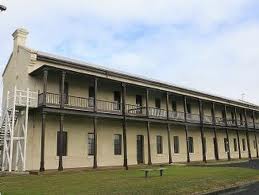Quarantine – Background

The discovery of gold in Victoria was a mixed blessing to the settlement at The Heads. Increasing numbers of ships, with their great numbers of passengers, provided more trade for the supply of fresh meat and vegetables. However the unsanitary and overcrowded conditions not only on board ship, but also in the homes, boarding houses and points of embarkation, aggravated the incidence of disease, and increasing numbers of infected persons were entering the colony.
The Ticonderoga 1852
The full impact of this latter condition was felt when the “Ticonderoga” from Liverpool, with 795 passengers and 48 crew on board at sailing time, anchored off The Heads on the 3rd of November 1852, carrying scores of fever stricken passengers. Word of their plight reached Melbourne on the same day through a report from the skipper of a brig which had overtaken the “Ticonderoga”.
Every effort was made to prevent the spread of the epidemic and the worst cases were placed aboard the “Lysander”. However, there were 70 deaths while the ‘Ticonderoga” was in quarantine, the victims being interred in an improvised cemetery near the foreshore. Later some remains were re-interred in the New Cemetery about a mile away towards Point Nepean. Here also are buried many of the first settlers, including Ford and Edward Skelton as well as sailors from the ships “Tornado” (1868) and “Cheviot” (1887) which were wrecked at The Heads. It was used by local residents until the new General Cemetery at Sorrento was opened to the public in 1890.
Quarantine Early 1850s
The early timber buildings both built and requisitioned with accommodation under canvas. Difficulties in disposing of the dead. The Quarantine Station was gazetted in 1854 and from this time isolation was enforced by police supervision.
Quarantine the Second Phase 1856 to 1875
The first of the big hospitals, doubts about the necessity of the Quarantine Station, other uses for the Station and a Royal Commission.
Quarantine Station in 1875
Description of the facilities a they existed in 1875.
Quarantine the Third Phase 1876 to 1899
The telegraph encourages visitors, the end of egalitarian accommodation, the quarantine of the Himalaya and developments coming up to the new century.
Quarantine the Fourth Phase 1900 to 1925
Significant growth, other uses as summer schools, the Commonwealth assumes control, demolition of some original buildings and the spanish flu pandemic.
Quarantine the Fifth Phase 1950 to 1998
The Army assumes control and introduces the Officer Cadet School and the Army School of Health. There are accommodations for refugees and the station is handed over.
